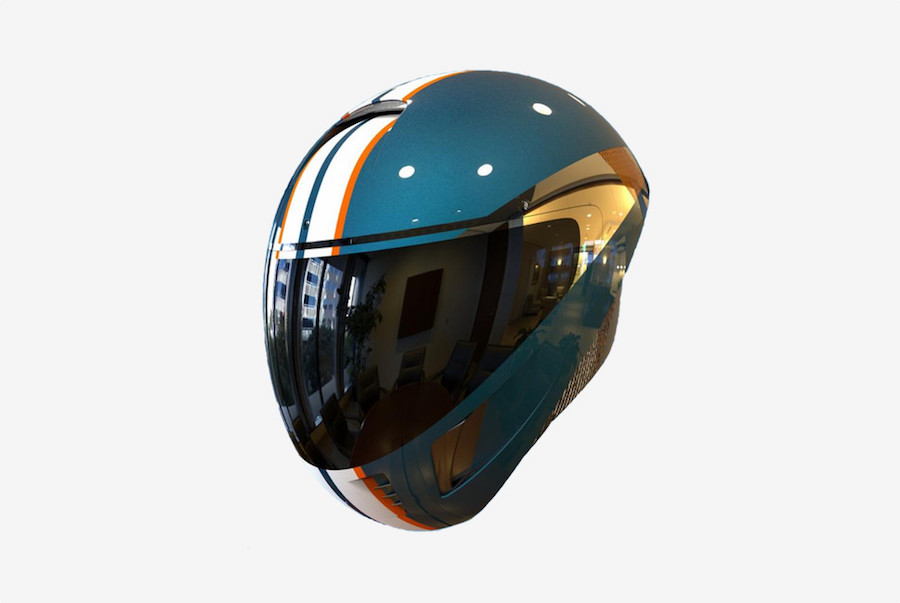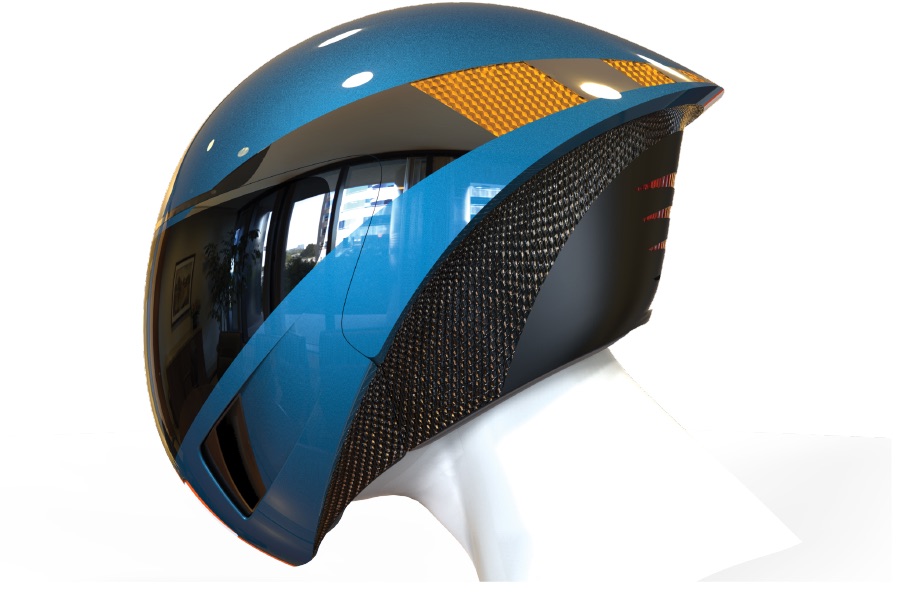If the creator of The Jetsons imagined the Family of the Future to use motorcycles instead of flying pods to get around in the 1960s cartoon, then this would surely be the helmet worn by George, Jane, Judy and Elroy. It’s not the work of Hanna-Barbera, however, but American firm NandLogic, which hopes to bring its so-called Encephalon helmet to market via a soon-to-be launched crowdfunding campaign.
Some of the helmet’s features have been seen before, but others haven’t. Perhaps the most innovative technology is the fact that pretty much all the features will function autonomously while on the move, without any input from the rider. Functions can be customised and programmed via the system’s smartphone app and NandLogic is hoping the final consumer model will be relatively affordable (sub-$1000) and relatively lightweight (sub-1800g).
They’ve seriously thought of everything. Check this out.

SEE!
To assist the wearer to be seen, it boasts a swathe of LEDs that act as daytime running lights, turn signals and brake lights, and through its inbuilt two-axis inertial measurement unit, it knows when to activate them. The rear-mounted brake lights will flash in an emergency braking situation. Not only is the helmet helping you to be seen, it’s doing a whole heap of seeing of its own. There’s cameras mounted front and rear that can continuously capture HD video and stills and store them on an inbuilt SD card. Image processing capabilities enable it to track objects and offer collision and blindspot warnings.
HEAR!
The inbuilt Bluetooth capability isn’t a new idea – like many lids it will allow you to accept and make calls, hear your GPS’s directions and listen to music. But as well as allowing you to hear things, it’s keeping an ear (or two) out to improve your safety as well. An internal microphone controls the helmet’s intelligent noise cancellation, while an external microphone listens out for sirens and car horns and will alert you if it detects anything it thinks you ought to be aware of.
SENSE!
As well as electrochromatic film embedded in the visor, which electronically adjusts the tint of your visor, the helmet boasts climate control. Once the inside of the helmet reaches a preset (by the user) level of temperature or humidity, inbuilt fans kick in and cool things down. On top of that, the helmet features a crash-assist function that, like other products currently emerging, will sense when you’ve crashed and call for help. In addition to the location, it will advise the amount of g-force the helmet experienced during the incident, as well as important medical history or information that may be useful to responders.

By Kel Buckley











